2017 Ford Fusion Sport Review - Pay to Play
2017 Ford Fusion Sport
There is no single car that appeals to the wants and needs of everyone — yet that hasn’t stopped Ford from trying.
Need a mid-sized family sedan? There’s a Fusion for that. What about a bare-bones four-door suitable for rental fleets? There’s a Fusion for that. Government-issue plug-in hybrid? There’s a Fusion for that, too. And now if you need a high performance sport sedan, there’s even a Fusion for that mission. Sort of.
The 2017 Fusion Sport takes the otherwise tame mid-size sedan market into a whole ‘nother realm thanks to the twin-turbo 2.7-liter EcoBoost V6 pillaged from the F-150. 325 horsepower in a mid-size sedan is interesting, but 380 lb-ft. of torque will grab a driver’s attention and keep it all the way up to “I’m sorry, officer.”
Ford’s stylists have exercised considerable restraint in creating the Sport’s unique appearance. Rather than slather it in gratuitous ST (or even SHO) badges, this Fusion is rather subtle, with key identifiers being a blacked-out, honeycomb grille and quad tailpipes, not to mention minimal input from the chrome trim department. Sitting on the “tarnished dark” 19-inch wheels, the Fusion Sport is a handsome car despite its general shape having logged a few years’ worth of familiarity. The Aston Martin-cribbed nose still stands out from the rest of the mid-size sedan crowd.
Ford exercised more restraint inside with an interior familiar to Fusion drivers. For the most part, it’s ergonomically sound with the large SYNC 3 touchscreen within easy reach and the speedometer flanked by a pair of 4.2-inch screens configurable to provide everything you’d want in a car except a decent-sized tachometer. The flurry of little round buttons for the climate control require some muscle memory conditioning before finding the rear defrost and heated seat button locations at speed.
Apple CarPlay is a welcome addition and helps to quiet the SYNC complainers — though in fiddling with SYNC, it worked just fine during our time with the test car until the day it was returned, when it froze up and refused to do anything but display the last song it remembered from SiriusXM.
The seats — both heated and cooled on this Canadian-spec car — feature Miko suede inserts that add a unique flourish to the interior and help keep the driver’s backside in place during cornering. This is especially important since the bolstering is nowhere near as aggressive as it is in, say, a Focus ST. Even if they’re not track-ready in terms of lateral support (which nobody should expect them to be), the seats are quite comfortable.
The almost generic look of the Fusion Sport makes it one heck of a sleeper and its swiftness is sure to catch more than a few fellow motorists off-guard. The EcoBoost engine provides a wickedly satisfying rush of forward thrust with only the slightest whisper of lag, pulling strongly to the upper revs. The rotary dial shifter has a little round “S” button in the middle that when pushed triggers more aggressive throttle response, shift points and in-cabin ruckus.
These days it’s hard to decipher how much intake / exhaust note is fabricated versus actual in many cars, but regardless of where it’s coming from here, the Fusion Sport provides a pretty impressive soundtrack when the driver pushes hard on the accelerator. By no means is it obnoxious — there are no pops and belches on deceleration — but it’s enough to remind that this isn’t a run-of-the-mill family sedan.
It’s when pulling away from a stop and winding out first and second gear that the Fusion Sport feels strongest. At highway speeds, downshifting a cog or two is required to really get a meaningful kick, but I never felt a need for more power when passing highway doddlers. The transmission is a six-speed automatic unit, which Ford says is heavier duty than the auto-box used in lesser Fusions, and snaps off shifts with moderate expediency. Still, folks who’ve grown accustomed to dual-clutch units will wish for a more responsive gearbox. The paddles help the driver think he or she is involved, but if pushed to near redline, the Fusion will simply shift for itself.
That Sport Mode “S” button also affects the suspension, too. Ford fit its Continuously Controlled Damping (CCD) to the Sport, which is able to stiffen things up, making the Fusion a surprisingly capable handler. With the extra all-wheel-drive hardware, this is no lightweight (nearly 4,000 lbs), and its mass is felt when playing on tighter curves, but body roll and dive are very well managed. That said, the car was tested during February in Canada and wore Pirelli Sottozero winter tires, so one can only assume it’ll be even more engaging on ice-and-grit-free roads and with rubber that’s not so squishy.
The Sport’s steering is quick without being darty, and it’s nicely weighted, but it lacks the feel one expects from a true sport sedan.
The ride isn’t half bad either, thanks in no small part to that CCD suspension that Ford says anticipates and reacts to potholes preventing a wheel from dropping too deep, resulting in the suspension being unruffled by road irregularities. The car’s stability at speed through sweepers attests to this, but big, heavy 19-inch wheels and sporty suspension tune (even when “S” mode isn’t selected) ensure the Sport won’t be mistaken for a cushy cruiser.
A lot of the Fusion Sport’s fun comes from having all that accessible and usable addictive power. Stomp on the pedal from a standstill and up to 50 percent of the power is directed rearward. There’s no torque steer, and hammering out of corners without discipline or respect for physics is silly fun while the big sedan just grips and goes. Surely, in a track setting, with all of us long-lost Andrettis at the wheel, we’d wish for the snazzier torque-vectoring system from the Focus RS — but come on, how many Fusion buyers are planning to enter drift competitions or track day events? For what it is, the Fusion Sport’s system will be more than satisfactory to the majority of its buyers.
Finally, as we all know, ya gotta pay to play, and the twin-turbo V6 puts much more emphasis on the Boost than the Eco. With more highway driving than city, the trip computer showed an average of 22 mpg, which isn’t outrageous for a car with the Sport’s performance. But this Fusion drinks 93 octane juice to get all 380 torques.
At the other end of the value quotient, with a starting price of $33,605 (before any incentives), it doesn’t have many peers — especially in the mid-size family sedan segment. American buyers are given a choice of equipment levels for their Fusion Sport, enabling that truly enticing entry point. Up here in the Great White North, we’re told to take our Fusion Sport loaded to the tune of more than $44,000 — or forget about it.
Does Ford’s new Sport trim help the Fusion family get closer to being all things to all people? Maybe, but as fun to drive as it is, it’s best to not expect a true sport sedan as defined by the Germans. Of course, it’s in keeping with the age-old American tradition of fitting a bigger, more powerful engine in an otherwise pedestrian sedan, creating a smile-inducing machine that’s bound to surprise a few performance car drivers.
Whether it’s all things to all people or not, a handsome, well-equipped AWD sedan with 380 lb-ft of torque surely has a place in our motoring enthusiasts’ world.
More by Jeff Wilson
Latest Car Reviews
Read moreLatest Product Reviews
Read moreRecent Comments
- UnoGeeks Great information. Unogeeks is the top SAP ABAP Training Institute, which provides the best SAP ABAP Training
- ToolGuy This thing here is interesting.For example, I can select "Historical" and "EV stock" and "Cars" and "USA" and see how many BEVs and PHEVs were on U.S. roads from 2010 to 2023."EV stock share" is also interesting. Or perhaps you prefer "EV sales share".If you are in the U.S., whatever you do, do not select "World" in the 'Region' dropdown. It might blow your small insular mind. 😉
- ToolGuy This podcast was pretty interesting. I listened to it this morning, and now I am commenting. Listened to the podcast, now commenting on the podcast. See how this works? LOL.
- VoGhost If you want this to succeed, enlarge the battery and make the vehicle in Spartanburg so you buyers get the $7,500 discount.
- Jeff Look at the the 65 and 66 Pontiacs some of the most beautiful and well made Pontiacs. 66 Olds Toronado and 67 Cadillac Eldorado were beautiful as well. Mercury had some really nice looking cars during the 60s as well. The 69 thru 72 Grand Prix were nice along with the first generation of Monte Carlo 70 thru 72. Midsize GM cars were nice as well.The 69s were still good but the cheapening started in 68. Even the 70s GMs were good but fit and finish took a dive especially the interiors with more plastics and more shared interiors.




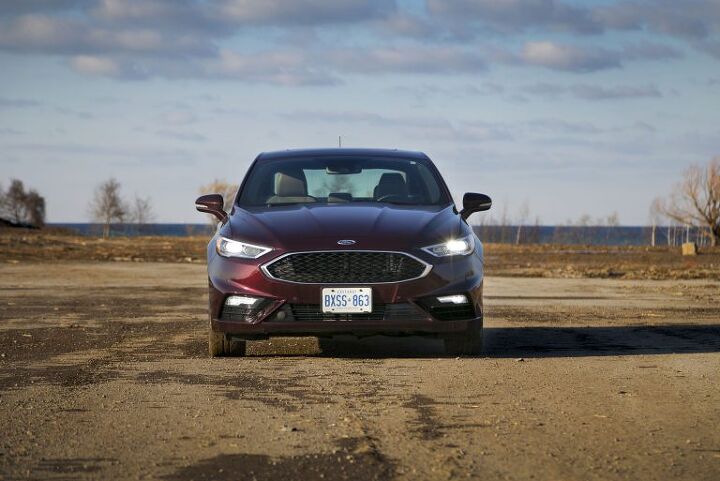




















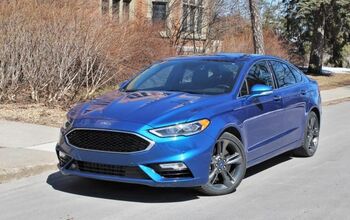
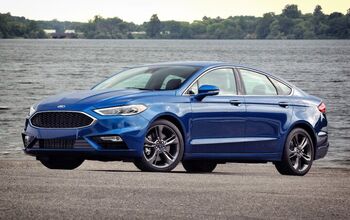
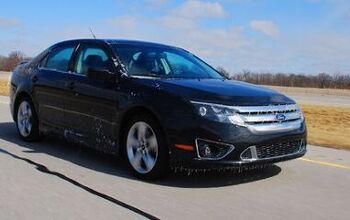
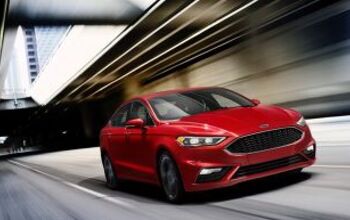











Comments
Join the conversation
I thought long and hard about a '17 Fusion Sport but for not a lot more money I instead opted for the Lincoln MKZ with the 3.0L TT engine. I ordered it avoiding a lot of the tech options which kept the price to less than $10K more than the Sport. My feeling is that if I think I really need a car that parks itself and warns me of lane drifting than what I really need is a bus pass. But the hard thing for me to take is that I'm going from a '13 Passat TDI that averaged mid-40s MPG to a car that burns twice that. But, to paraphrase a certain comedian, horsepower is a helluva drug.
2.7 Ecoboost got snort. It pulls my heavy 2016 F150 S-Crew around pretty well. I sure hope they make it sound better than it does in the F150, somewhere between a fart and a groan.